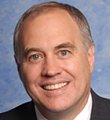- By Bill Reynolds
- News
 Print
Print  New York State lost $100 million over a four year period because the State Department of Health’s (DOH) eMedNY Medicaid reimbursement system failed to properly apply a 20 percent coinsurance limit on certain charges, and the eMedNY system lacked controls to detect incorrect claims information about Medicare payments, according to an audit released by State Comptroller Thomas P. DiNapoli. The audit was among three DiNapoli released on Medicaid waste Monday.
New York State lost $100 million over a four year period because the State Department of Health’s (DOH) eMedNY Medicaid reimbursement system failed to properly apply a 20 percent coinsurance limit on certain charges, and the eMedNY system lacked controls to detect incorrect claims information about Medicare payments, according to an audit released by State Comptroller Thomas P. DiNapoli. The audit was among three DiNapoli released on Medicaid waste Monday.“We keep ringing the same bell, but DOH just doesn’t hear it,” DiNapoli said. “Time and time again, our audits have found overpayments, double payments, and fraudulent payments. Taxpayers can’t afford this. Now more than ever, every dime counts, and $100 million is a lot of taxpayer dimes. DOH has to do a better job of protecting the taxpayers’ money.”
The problems resulted in Medicaid paying for services not normally covered or paying more for services than required by State law. Some providers’ failure to accurately report Medicare payments were so frequent that DiNapoli’s auditors have questioned whether a fraud was being committed and have referred 13 providers to the Office of the Medicaid Inspector General.
A second audit DiNapoli released today found New York lost approximately $14 million in Medicaid overpayments between 2006 and 2007 because the DOH had outdated and inaccurate Medicare eligibility information on its files. Auditors found that as of May 2010, eMedNY did not have accurate Medicare eligibility information on nearly 6,000 Medicaid recipients eligible who were enrolled in Medicare since December 2007. Because Medicare must be billed first and it was not done so, Medicaid overpaid.
A third audit DiNapoli released found that DOH had not corrected problems identified in DiNapoli’s 2008 audit, 2008-S-63 which found $1.8 million in erroneous payments.
DiNapoli also noted that found Medicaid pays approximately $125 million extra annually because of a statutory difference in payment procedures for Medicare/Medicaid eligible recipients. Medicaid reimburses for services to dually eligible recipients at a higher rate than it does for those who are only Medicaid eligible. Other states including Florida and California have significantly reduced or eliminated altogether, Medicaid payments to providers for services provided to dually eligible patients. DiNapoli recommended that DOH work with the governor and the state legislature to review whether a policy change is warranted.
DiNapoli recommended that DOH officials:
- Audit claims involving Medicaid payments for Medicare beneficiaries including the 13 providers identified as having possibly fraudulent billing problems regarding Medicare beneficiaries.
- Establish a more proactive culture that ensures Medicaid is the payer of last resort for services provided to dual eligible individuals. Specific steps toward this goal should include:
- Reviewing policies in other states that prevent overpayments to dual-eligible patients;
- Re-programming the eMedNY system to apply coinsurance limitations;
- Investigating all Medicare coinsurance claims that do not include either a Medicare payment or a deductible;
- Rejecting claims that report a Medicare deductible which exceeds established limits; and
- Verifying Medicare payment, deductible and coinsurance amounts reported by providers against Medicare payment data maintained by CMS.
----
v6i37



